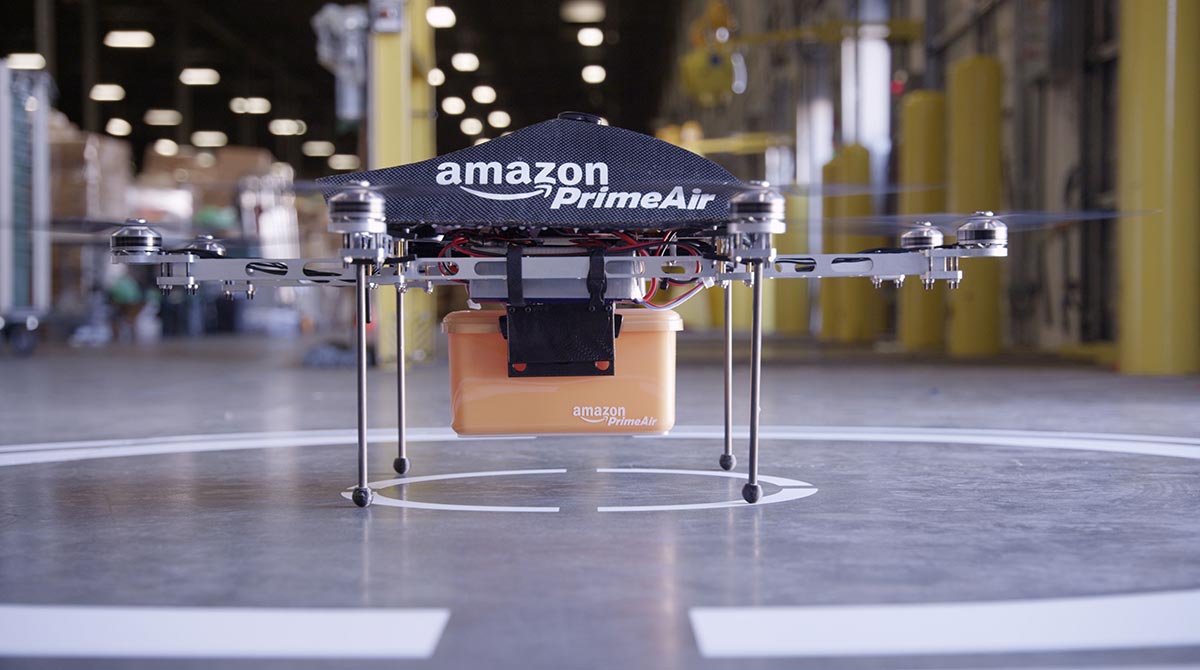How a Technological 'Tsunami' Is Shaking Up the Supply Chain Industry

Technological advances are hitting the industry like a giant wave, Paul Dittmann, executive director of the Global Supply Chain Institute at the University of Tennessee, said.
"I've been around this field for decades and none of us has ever seen a time where there's been anywhere close to the amount of technology in the supply chain," Dittmann said.
The impact of digital, internal and physical technology, including drones, robotics and driverless cars, will be substantial, he said. Drones have the potential to deliver packages and work inside company warehouses around the clock alongside robots. Driverless vehicles could change the trucking industry exponentially. Each possibility comes with its own list of pros and cons, as Dittmann discusses in his University of Tennessee White Paper "New Supply Chain Technology Best Practices."
Digital technological changes have been, and will continue to be, introduced to the industry. While the timeline of the physical technological changes is uncertain, Dittmann said the change will be more than an evolution.
RELATED: Amazon's delivery-drone research focuses on avoiding birds
"It may be bigger than that," he said. "We may be at an inflection point ... It could be a matter of survival. Survival is not too strong of a word right now. Look at what's happening in the retail industry right now. We see retailers, it seems like every day, going out of business or closing stores."
Dittmann said companies that want to survive should put a long-term strategy into place. It's something the supply chain industry traditionally has lacked.
Based on the Global Supply Chain Institute's research, he said, 16% of companies have multiyear strategies in place. Most are focused on meeting annual goals.
RELATED: As more robots join the workforce, some say it could bring an 'upswing in jobs'
"The risk is that we start chasing shiny, new things," he said. "We play with these things for a while and then leave and jump on the next bandwagon. ... It's really critical that companies place a strategy in [the technological] area."
While companies need to devote additional resources to decide how to handle the supply chain of the future, Dittmann said, the "five pillars of excellence" he has written about for years are still relevant, though slightly different.
It all begins with talent. The only difference now is the talent includes knowing how to operate the right technology.
His second pillar was always keeping up with, and preparing for, technology. Only now has that become "incredibly important."
RELATED: Amazon’s warehouse robot war is spreading
The third and fourth pillars are internal and external collaboration. Dittmann said all functions within and outside the company need to be aligned.
"Fifth is getting it done," he said. "Once you have your strategy based on the four pillars, you have to get it done or else it's all just talk."
The needs of the customer drive the supply chain. Those needs have shifted dramatically since the "Amazon effect" hit the industry. All of a sudden customers wanted things faster for the same price.
"Speed and time will be as important as competing on cost, inventory levels, fuel rates," Dittmann said. "We compete on all those things. In the end, maybe the most important will be speed. The people that can do it fastest will be the winners. The fastest at the lowest cost."
Steve Baker, vice president of logistics at Radio Systems Corp. said changes to increase speed have already occurred.
He described Amazon as "a technology and logistics company that happened to sell things." It is now the benchmark for the industry. Radio Systems products are sold through retail distributors including Amazon, Wal-mart, Tractor Supply, Petsmart and others — all of which provide a "report card" to the company.
RELATED: Economists may be underestimating how fast the robots are coming for your job
"All of them now have performance measures that you need to be operating at or above, or else it's a tough conversation," Baker said.
Baker said companies know the status of their performance almost instantly now. Targets are set for every aspect of a business' supply chain, including response time, accurate supply available and customer feedback.
"We've had to keep up and invest in our internal technology in our worldwide system to participate in this information exchange," Baker said. "Programs and systems operate in certain speeds and capacities and compatibility and security. That part of the technology is rapidly advancing. It's an expense, but it's a necessity. There's no way not to participate, because your competitor probably is."
Dittmann said the presence of technology is not enough. It has to be part of bigger-picture thinking.
"If a company is going to use drones in warehouses and driverless vehicles and robotics, it's important to know that," he said. "It can't be, 'Wow, drones would be really cool to use in the warehouse. Let's go do it.' It needs to be part of an overall strategy seeing where that fits into the supply chain."
While the use of technology is expected to add jobs to the economy, Dittmann said the topic is one to discuss with care.
"We need to be careful to recognize that some jobs will disappear," he said. "There's no easy way to say that. It's going to happen. All the companies that are making drones, robotics, developing them, developing the information systems, those will require employees."
But they will be different jobs that require a specific skill set and specific education, Dittmann said.
"A warehouse worker doing hourly work probably wouldn't be able to do that new job," he said. "It will be disrupting, no question about it."

